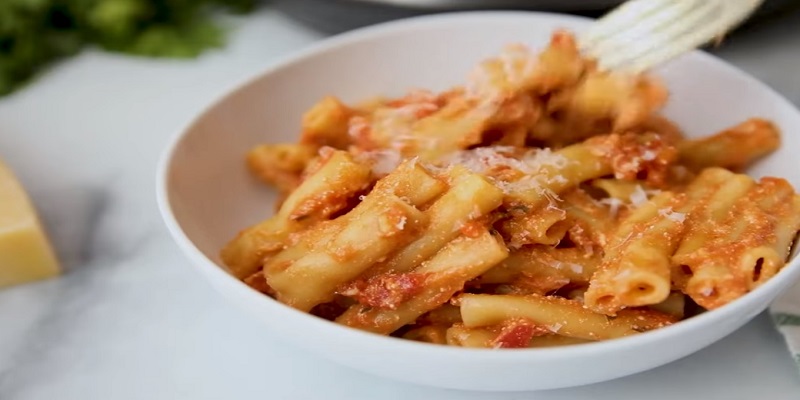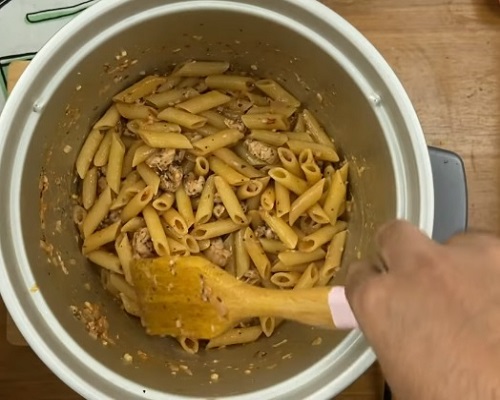Cooking pasta and noodles are very common in almost every household, but what do you do when you don’t have access to a stove or microwave? Whether you’re camping, in a power outage, or just don’t have access to traditional cooking methods, it’s still possible to enjoy a delicious plate of pasta.
In this guide, I will show you how to cook pasta without a stove or microwave, using just a pot, a lid, and some water.
I’ll go over the materials and ingredients needed, and provide step-by-step instructions for cooking the perfect pasta. I’ll also share some variations and alternatives, so you can experiment with different types of pasta and cooking methods.
So, whether you’re a beginner cook or a seasonal cook, this guide will teach you how to cook pasta without the need for traditional cooking methods. In same methods you can use for noodles.

How to Cook Pasta Without a Stove or Microwave?
There are so many alternative cooking methods you can use to cook pasta. My choice always uses an Instant Pot, which uses pressure to cook the pasta quickly and evenly. Another great option is to use a solar cooker, which uses the power of the sun to heat the water and cook the pasta.
Here are another two more common options are available- Rice cooker and Slow cooker.
Keep in mind that these alternative methods may require some additional equipment and may take longer to cook the pasta.
Ultimately, the key to successful pasta cooking is to be creative and adaptable. With a little bit of my experimentation and some basic know-how, you can enjoy a delicious plate of pasta no matter where you are or what kind of equipment you have on hand.
Materials and Ingredients Needed
- Rice cooker, Slow cooker or Instant pot
- Water
- Salt
- Pasta of your choice (spaghetti, fettuccine, etc.)
- Pasta sauce
When cooking pasta without a stove or microwave, it’s important to have an alternative method of heating the water. Rice cooker, Slow cooker or Instant pot are all great options as they can be used to heat water and cook pasta.
The Rice cooker: Some rice cookers have a “pasta” or “steam” setting that allows you to cook pasta in the same way you would cook rice.
The Slow cooker: Some slow cookers can be used to cook pasta by adding pasta, water, and other ingredients to the slow cooker and leaving it to cook for a few hours.
The Instant pot: An Instant pot uses pressure to cook the pasta quickly and evenly.
It’s always important to follow the manufacturer’s instructions for the device you choose, and to use enough water to cover the pasta by at least 2 inches, and add some salt to the water to give the pasta more flavor. Finally, you can use any type of pasta of your choice, but keep in mind that some types of pasta may take longer to cook than others.
Step-by-Step Instructions
Rice Cooker Method

- Fill the rice cooker with enough water to cover the pasta by at least 2 inches and add some salt to the water.
- Add the pasta to the rice cooker and set it to the “pasta” or “steam” setting.
- Cook the pasta for the recommended time on the package, usually around 8-12 minutes for most types of pasta.
- Check the pasta for doneness by biting into a piece. It should be cooked through but still have a bit of firmness.
- Drain the pasta then put again in cooker and add your desired sauce or toppings.
- Cook more then serve.
Slow Cooker Method

- Fill the slow cooker with enough water to cover the pasta by at least 2 inches and add some salt to the water.
- Add the pasta to the slow cooker along with any desired seasonings or vegetables.
- Cook the pasta on low for the recommended time on the package, usually around 8-12 minutes for most types of pasta.
- Check the pasta for doneness by biting into a piece. It should be cooked through but still have a bit of firmness.
- Drain the pasta and add your desired sauce or toppings before serving.
Instant Pot Method

- Fill the Instant Pot with enough water to cover the pasta by at least 2 inches and add some salt to the water.
- Add the pasta to the Instant Pot.
- Close the lid and set the Instant Pot to manual or pressure cook on high for the recommended time on the package, usually around 8-12 minutes for most types of pasta.
- Once the pasta is cooked, release the pressure using the quick release method.
- Check the pasta for doneness by biting into a piece.
- Put the all ingredients and toping together then cook more time and serve.
It is important to note that cooking times may vary depending on the type of pasta and the method used. Be sure to check the pasta for doneness a minute or two before the recommended cooking time to avoid overcooking.
Different Types of Pasta
Not all pasta is created equal, and some types may be more suitable for cooking without a stove or microwave. For example, small pasta shapes such as macaroni, orzo, and ditalini will cook faster and more evenly than longer pasta shapes like spaghetti or fettuccine.
Additionally, pasta made with whole wheat or other alternative grains may take longer to cook. It’s important to be mindful of the pasta you choose and to adjust the cooking time accordingly.
Tips and Tricks for Perfect Cooking
- Stir the pasta occasionally while cooking to prevent it from sticking together.
- Use enough water to cover the pasta by at least 2 inches, this will help the pasta cook evenly.
- add some salt to the water before adding the pasta, it will add more flavor to the pasta.
- Check the pasta for doneness a minute or two before the recommended time on the package to avoid overcooking.
- If you want a firmer texture, cook the pasta for less time and if you prefer a softer texture, cook for a minute or two more.
- Drain the pasta well, leaving a bit of water clinging to the pasta will help the sauce adhere better.
- Follow the manufacturer’s instructions when using a rice cooker, slow cooker or Instant pot.
With these steps and tips, you will be able to cook pasta without a stove or microwave using rice cooker, slow cooker or Instant pot with great success, and enjoy a delicious plate of pasta anywhere, anytime.
Conclusion
Cooking pasta without a stove or microwave may seem daunting, but it’s actually quite simple when you have the right tools and techniques. I’ve provided a comprehensive guide on how to cook pasta using a rice cooker, slow cooker, instant pot, and even just a pot with a lid. Each method has its own advantages and disadvantages, so it’s important to choose the one that works best for you and your situation.
Finally, cooking pasta without a stove or microwave is possible, and with a bit of creativity and experimentation, you can enjoy a delicious plate of pasta anytime, anywhere. I Must encourage you to try different pasta and cooking methods, and to have fun with the process. Happy cooking!

Leave a Reply